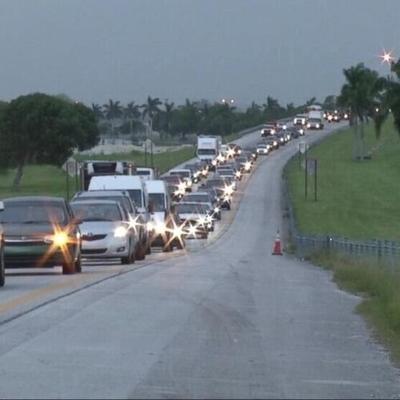March 26, 2020
 Civil and Environemntal Engineering doctoral student Stephen D. Wong, Delft University of Technology Faculty Adam J. Pel, Transportation Sustainability Research Center Co-Director Susan A. Shaheen, and Delft University of Technology Faculty Caspar G. Chorus publish Fleeing from HurricaneIrma: Empirical Analysis of Evacuation Behavior Using Discrete Choice Theory.
Civil and Environemntal Engineering doctoral student Stephen D. Wong, Delft University of Technology Faculty Adam J. Pel, Transportation Sustainability Research Center Co-Director Susan A. Shaheen, and Delft University of Technology Faculty Caspar G. Chorus publish Fleeing from HurricaneIrma: Empirical Analysis of Evacuation Behavior Using Discrete Choice Theory.This paper analyzes the observed decision-making behavior of a sample of individuals impacted by Hurricane Irma in 2017 by applying advanced methods based in discrete choice theory. Our first contribution is identifying population segments with distinct behavior by constructinga latent class choice model for the choice whether to evacuate or not. We find two latent segments distinguished by demographics and risk perception that tend to be either evacuation-keen or evacuation-reluctant and respond differently to mandatory evacuation orders. Evacuees subsequently face a multi-dimensional choice composed of concurrent decisions of their departure day, departure time of day, destination, shelter type, transportation mode, and route. While these concurrent decisions are often analyzed in isolation, our secondcontribution is the development of a portfolio choice model (PCM), which captures decision-dimensional dependency (if present) without requiring choices to be correlated or sequential. A PCM reframes the choice set as a bundle of concurrent decision dimensions, allowing for flexible and simple parameter estimation. Estimated models reveal subtle yet intuitive relations, creating new policy implications based on dimensional variables, secondary interactions, demographics,and risk-perception variables. For example, we find joint preferences for early-nighttime evacuations (i.e., evacuations more than three days beforelandfall and between 6:00 pm and5:59 am) and early-highwayevacuations (i.e., evacuations more than threedays beforel andfall and on a route composed of at least 50% highways). These results indicate that transportation agencies should have the capabilities and resources to manage significant nighttime traffic along highways well before hurricane landfall.
